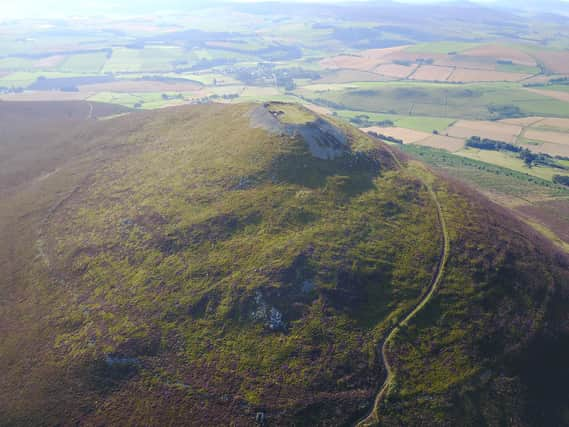Major Pictish discovery 'could help drive tourism' to Scotland


It is hoped that the discovery of a Pictish ‘village’ on a commanding hilltop near Rhynie in Aberdeenshire could act as a catalyst for visitors keen to
explore the story of the mysterious people who lived in the north and east of Scotland from around 3rd Century AD.
Advertisement
Hide AdAdvertisement
Hide AdWhile knowledge and understanding of the Picts has greatly increased in recent times given a number of breakthrough studies by archaeologists, there is no one place that brings together their history.
Talks will get underway post-pandemic to discuss how and if a visitor attraction could be set up in Aberdeenshire following the Rhynie find of international significance, it is understood.
Cllr Jim Gifford, Leader of Aberdeenshire Council, said: “This find of historic importance will be of huge significance. Aberdeenshire is an already popular tourist destination due to its picturesque mountains and coastline as well as its rich history and cultural traditions.
“Like everywhere, our communities and businesses have suffered financial hardship due to the Coronavirus (Covid-19) pandemic so I am hopeful that once restrictions start to be lifted, and of course when it is safe to do so, visitors from far and wide will flock to Aberdeenshire to explore this find and act as a welcome boost to the local economy.”
The discovery of evidence of hilltop settlement at Tap o’ Noth, where 4,000 people may have lived in more than 800 huts, has been described as “mindblowing” by Dr Gordon Noble of Aberdeen University, who led the research.
Radiocarbon dating suggested that the fort, which enlclosed an area of some 17 acres, was constructed in the fifth to sixth centuries AD and that settlement on the hill may date back as far as the third century AD, meaning it is likely to be Pictish in origin.
Their discovery means that the area, which today is a quiet village home to just a few hundred people, once had a hilltop settlement that at its height may have rivalled the largest known post-Roman settlements in Europe.
Bruce Mann, Archaeologist for Aberdeenshire Council said: “There is certainly still a huge amount of work to be undertaken on the site to fully understand the story. Were all the huts lived in at the same time for instance?
Advertisement
Hide AdAdvertisement
Hide Ad“If they were then we are looking at urbanisation in Scotland centuries earlier than expected. This opens up questions such as how were so many people fed, what was the societal organisation that ran it, what happened for the site to become abandoned.
“Looking back twenty years ago we knew so little about the Picts beyond their enigmatic carvings. Now we are revealing details about their everyday lives and the landscapes they occupied. It has been a huge leap in understanding, and will no doubt form the basis for celebrating and promoting another part of the rich history of the area for future visitors.”
The Pictavia centre near Brechin closed in 2014 given a fall in vistor numbers and cuts in funding from Angus Council and VisitScotland.
The Pictish Stone Trail connects some of the best sculpture from the era in Aberdeenshire with other examples found in situ from Fife to Perthshire, Angus and Highland.
The University of Aberdeen will continue to develop digital access to information on the new Pictish finds.
A message from the Editor:Thank you for reading this story on our website. While I have your attention, I also have an important request to make of you.With the coronavirus lockdown having a major impact on many of our advertisers - and consequently the revenue we receive - we are more reliant than ever on you taking out a digital subscription.Subscribe to scotsman.com and enjoy unlimited access to Scottish news and information online and on our app. With a digital subscription, you can read more than 5 articles, see fewer ads, enjoy faster load times, and get access to exclusive newsletters and content. Visit https://www.scotsman.com/subscriptions now to sign up.
Our journalism costs money and we rely on advertising, print and digital revenues to help to support them. By supporting us, we are able to support you in providing trusted, fact-checked content for this website.
Joy Yates
Editorial Director
Talks on a “visitor presence on the ground” will resume among a number of parties once the public health crisis has easted.